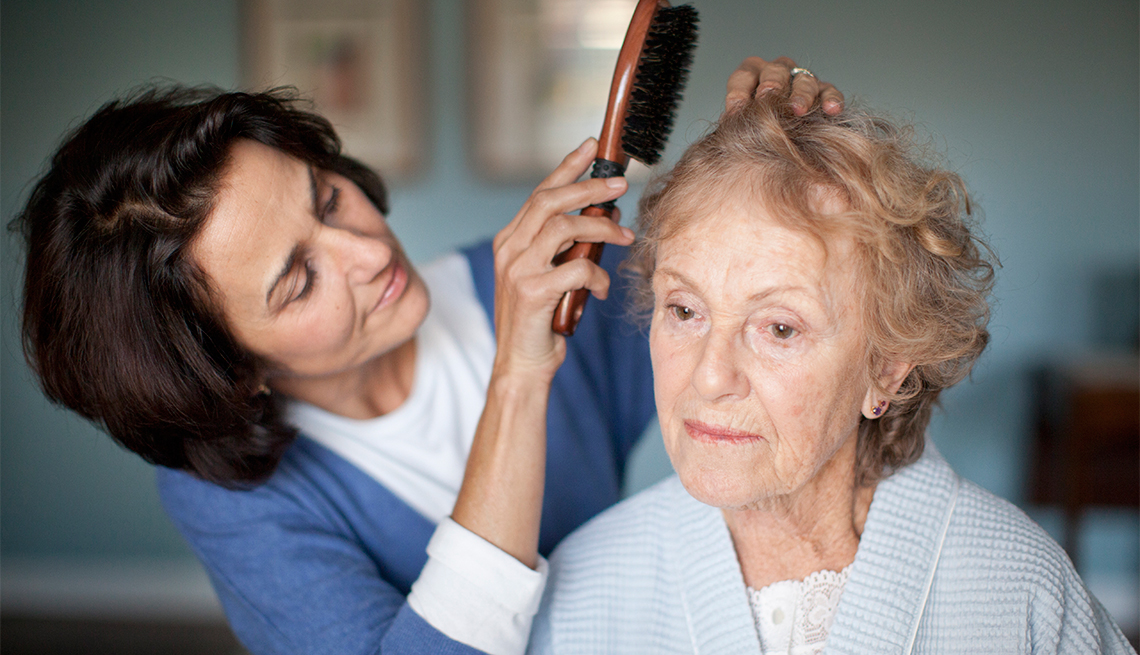New Report Cites Need for a National Family Caregiving Strategy
More action is needed to prepare health care and social service systems
En español | The demand for family caregivers of older adults is increasing significantly, and
people who perform this essential service need more support, says a report released Tuesday by the National Academies of Sciences, Engineering and Medicine.
The report calls for a transformation of public policies and practices affecting people who are caring for older relatives or friends. It recommends that the next presidential administration “take immediate steps to address the health, economic and social issues” facing family caregivers. And it calls for the prompt development of a national caregiving strategy.
“Supporting family caregivers should be an integral part of the nation’s collective responsibility in caring for its older adult population,” said Richard Schulz, director of the University Center for Social and Urban Research at the University of Pittsburgh and chair of the 19-member expert committee that issued the report.
The recommendation for a national strategy is consistent with AARP’s push for pending legislation in Congress: The bipartisan Recognize, Assist, Include, Support, and Engage (RAISE) Family Caregivers Act (S. 1719/H.R. 3099) requires the development of a national strategy to support family caregivers. This bill unanimously passed the Senate last December and awaits action in the House of Representatives. Over 50 national organizations have urged the House to pass the RAISE Act in September.
According to the report, entitled Families Caring for an Aging America, at least 17.7 million individuals in the U.S. are caring for someone age 65 or older. The number of people needing care is expected to grow in the years ahead, even as the number of potential family caregivers is shrinking. Lower fertility, higher rates of childlessness and widespread divorce point to a diminishing pool of potential caregivers, the report says. Older adults will have fewer family members to rely on, and they are more likely to be unmarried, living alone and more distant from their children.
Video: Family Caregiver’s Guide to Managing Medication: Giving Injections - This video shows a husband learning how to give an insulin injection before his wife leaves the hospital.
The committee points out that so far little action has been taken to prepare the health care and social service systems for this demographic shift.
Family caregivers are often marginalized or ignored despite their important role, the committee said. They may be excluded from treatment decisions and care planning. Financial incentives encourage shorter hospital stays with the implicit expectation that family members can manage the transition from hospital to home. Providers also expect family caregivers with little or no training to handle technical procedures and equipment, such as feeding and drainage tubes, the report says.
Efforts in this arena are already underway: Over the past several years, 33 states have enacted the CARE (Caregiver Advise, Record, Enable) Act, which requires hospitals to communicate with family caregivers and to instruct them on how to safely provide home care after discharge.
Advocates say more needs to be done. “Ignoring family caregivers leaves them unprepared for the tasks they are expected to perform, carrying significant economic and personal burdens,” said Schulz. “Caregivers are potentially at increased risk for adverse effects in virtually every aspect of their lives — from their health and quality of life to their relationships and economic security. If the needs of caregivers are not addressed, we as a society are compromising the well-being of elders.”

